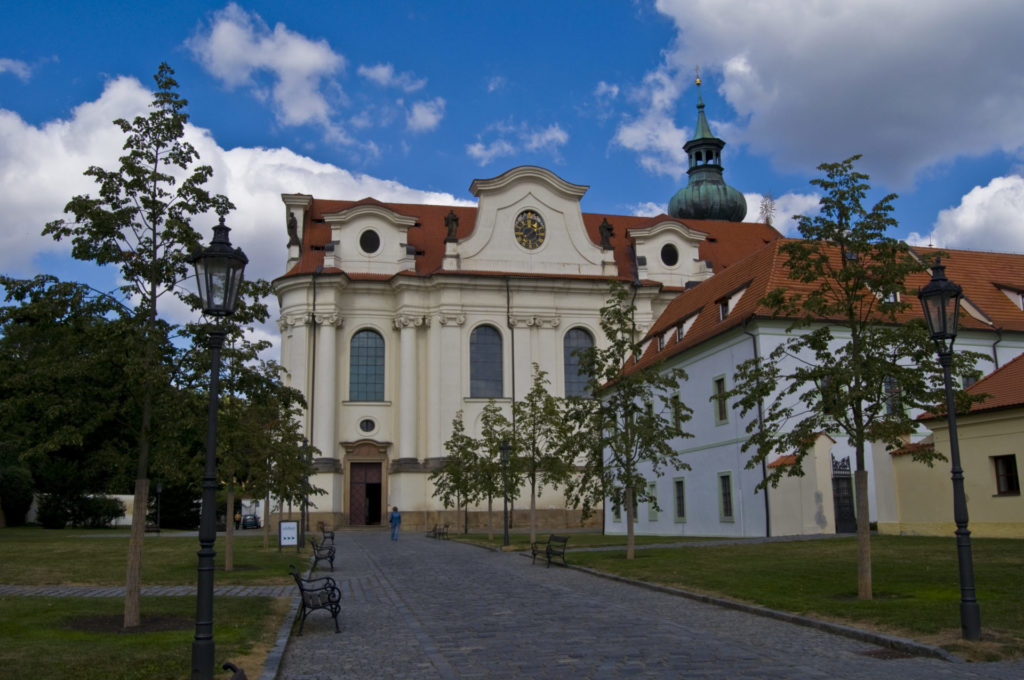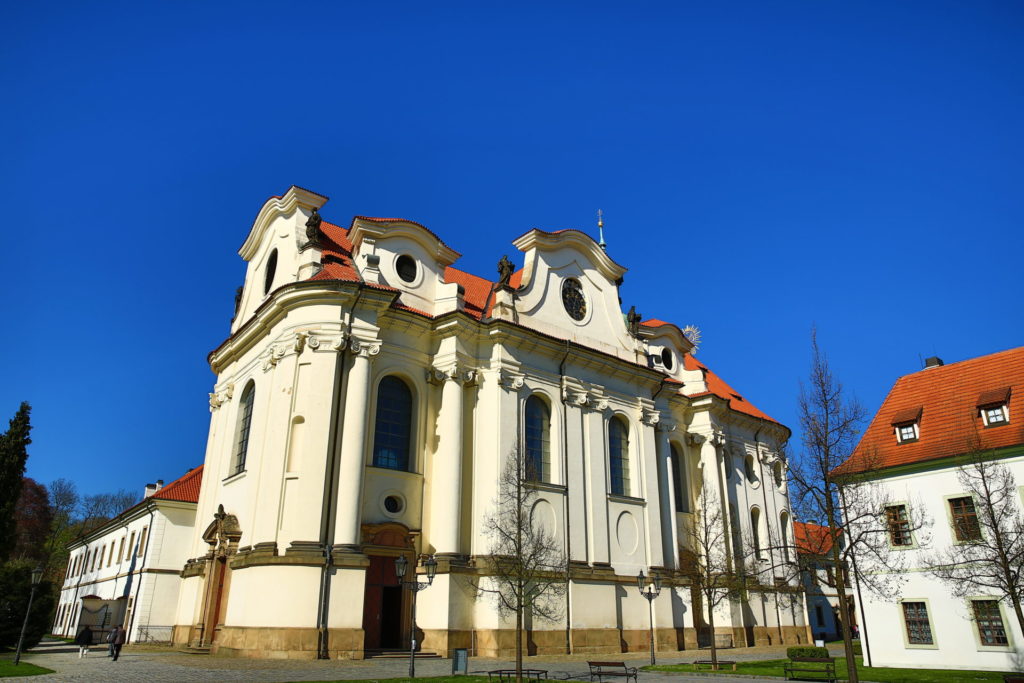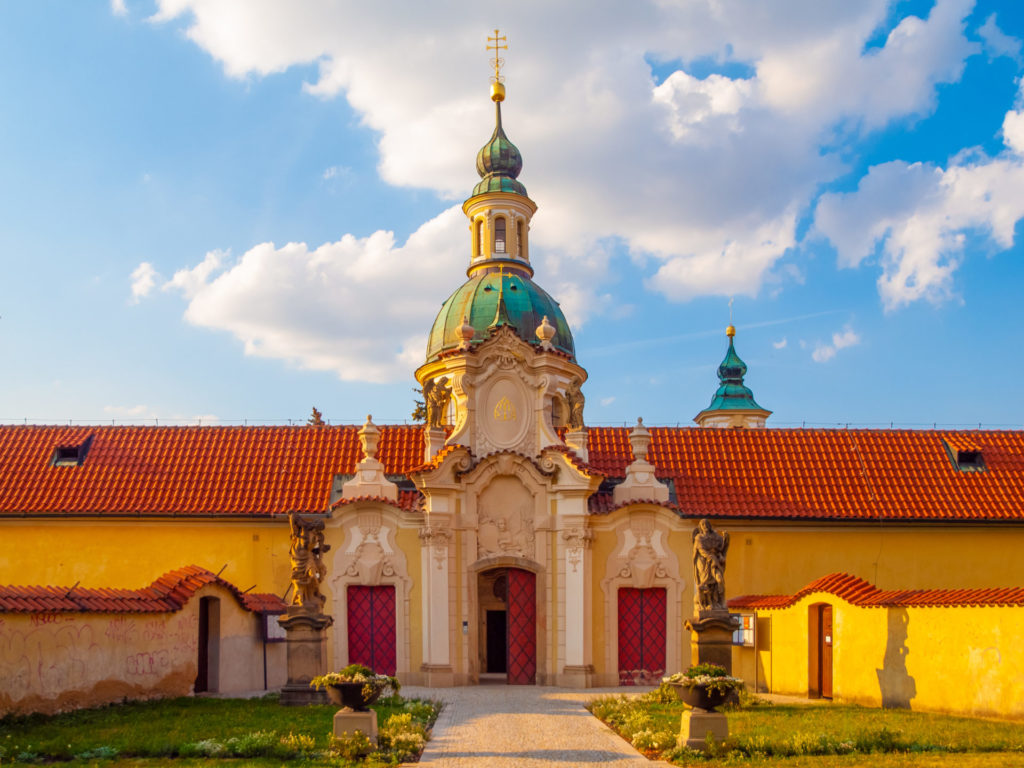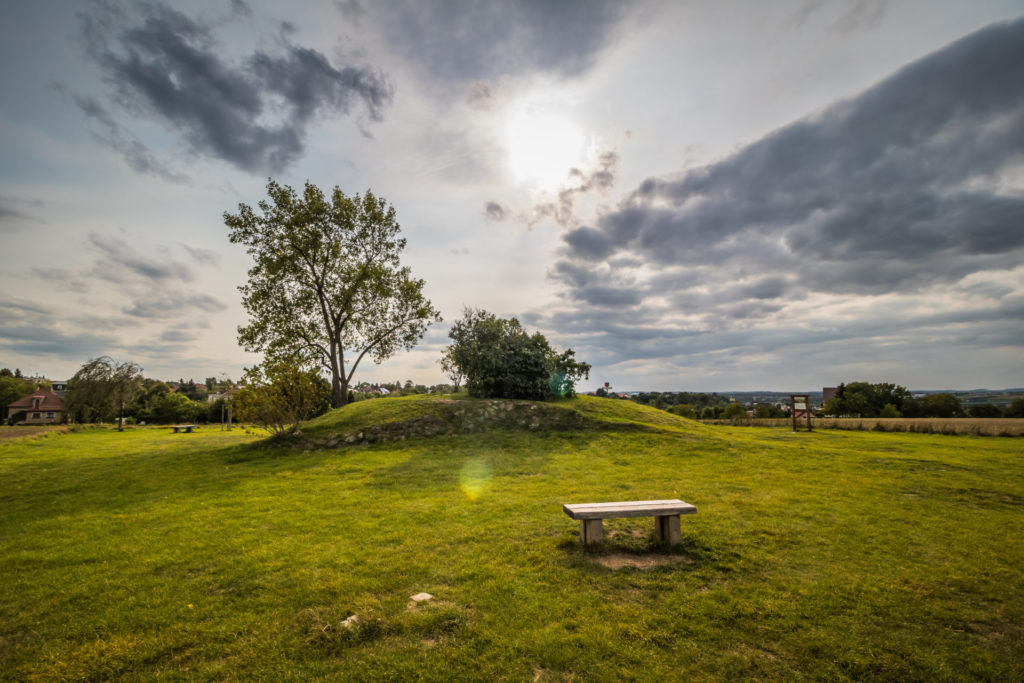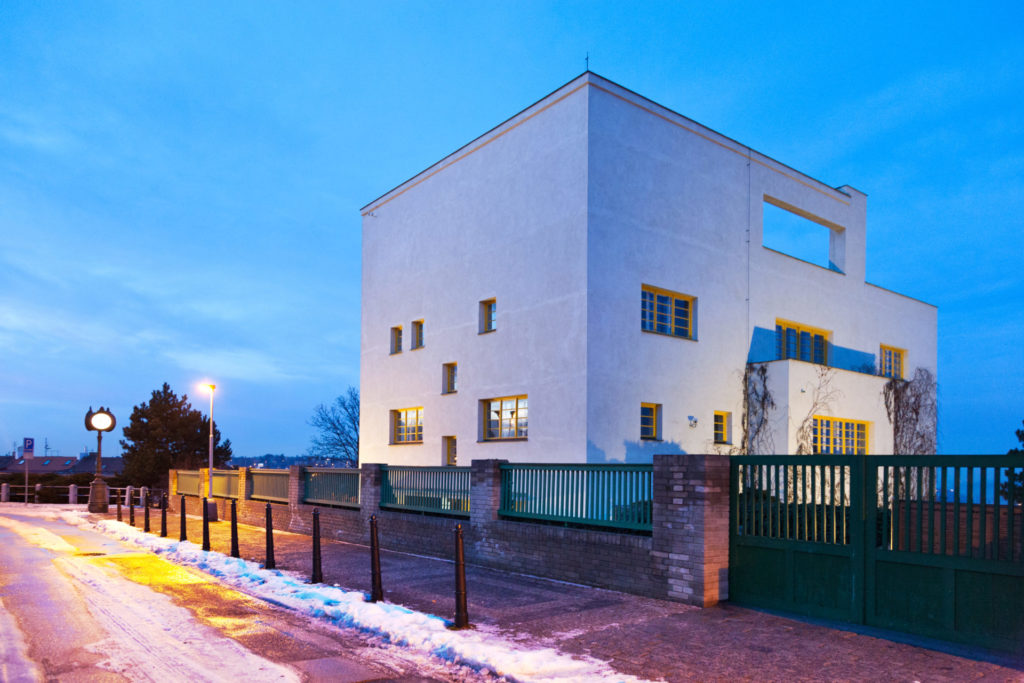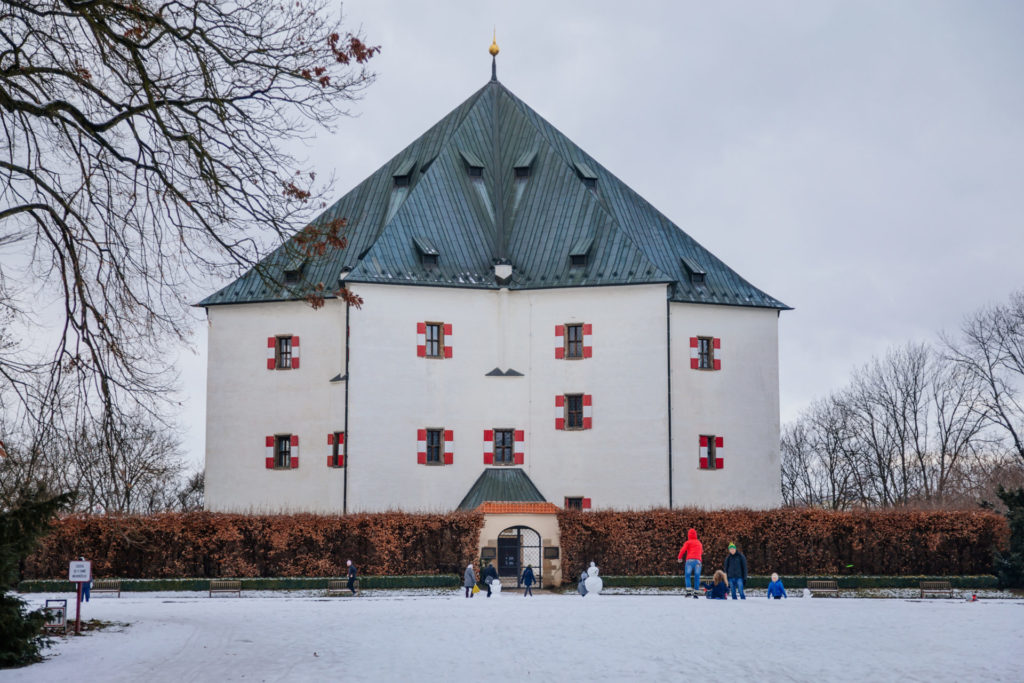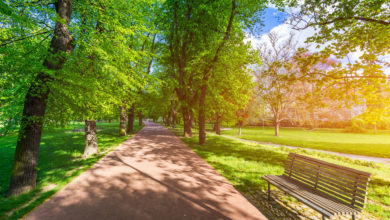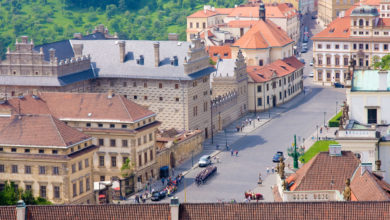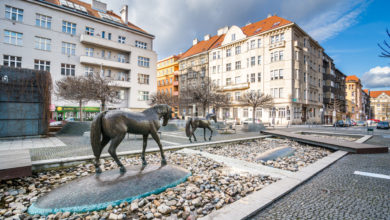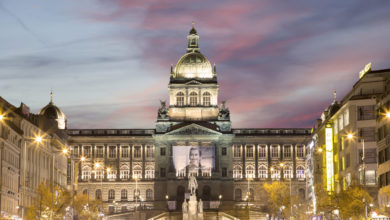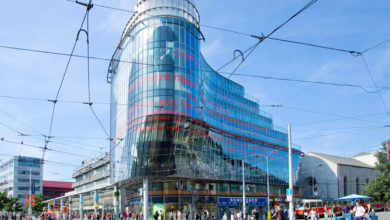Břevnov and Bílá Hora
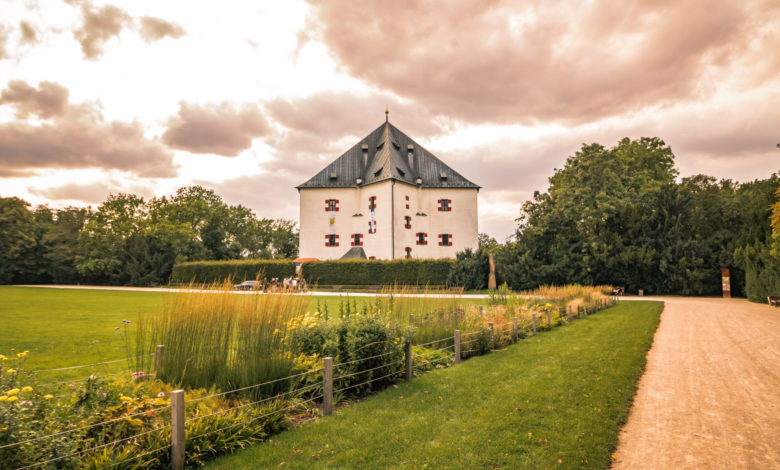
Forested and, later, agriculturally worked land spreads out to the west and northeast of Prague Castle. To the west of Hradčany, Břevnov was the first to be settled. The Bishop, St Adalbert, founded the oldest Benedictine monastery in Bohemia here in 993. All that was preserved from the original structure is the impressive Romanesque crypt from the 11th century; however, most monastery buildings were remodelled at the beginning of the 18th century in the Baroque style. The Convent Church of St Margaret (klášterní kostel sv. Markéty) and the convent complex as a whole preserved many Baroque art treasures. West of Břevnov, the remains of the local game preserve can be found. The Hvězda Game Reserve was founded by Ferdinand I (1534), and forest animals were kept here until the beginning of the 19th century; after that, the reserve was transformed into a park. The name of the reserve determined the current version of the local Hvězda (Star Summer Palace). It was designed in 1555 by Ferdinand of Tirolean, and the structure is actually built on the ground plan of a six-pointed star.
Not far from Hvězda is located Bílá hora (White Mountain), a symbol of tragedy for most Czechs. The Monument is a reminder of the place where 8th November 1620, the better-paid emperor’s Catholic League mercenary army met with the poorly-paid Czech Protestant mercenaries. Confusion, chaos, and an embarrassing stampede became an apt characterization of the professional army. For the next 300 years, the Czech land was merely a Habsburg province. The elite of the land emigrated, and most of the Czech nobles, the richest from the city and the intellectuals, including the famous “teacher of the nation” J. A. Komenský (Comenius), disappeared. 90% of the inhabitants of Bohemia were Protestants; those who refused to convert to Catholicism had to leave, and their property was confiscated. By the end of the Thirty Years’ War, the Czech kingdom had lost half its population. However, White Mountain became a place of pilgrimage for Catholics. The Cathedral of the Virgin Mary (chrám Panny Marie), located here, was built at the beginning of the 18th century and is decorated with the rich frescos of K. D. Asam and V. V. Reiner.

